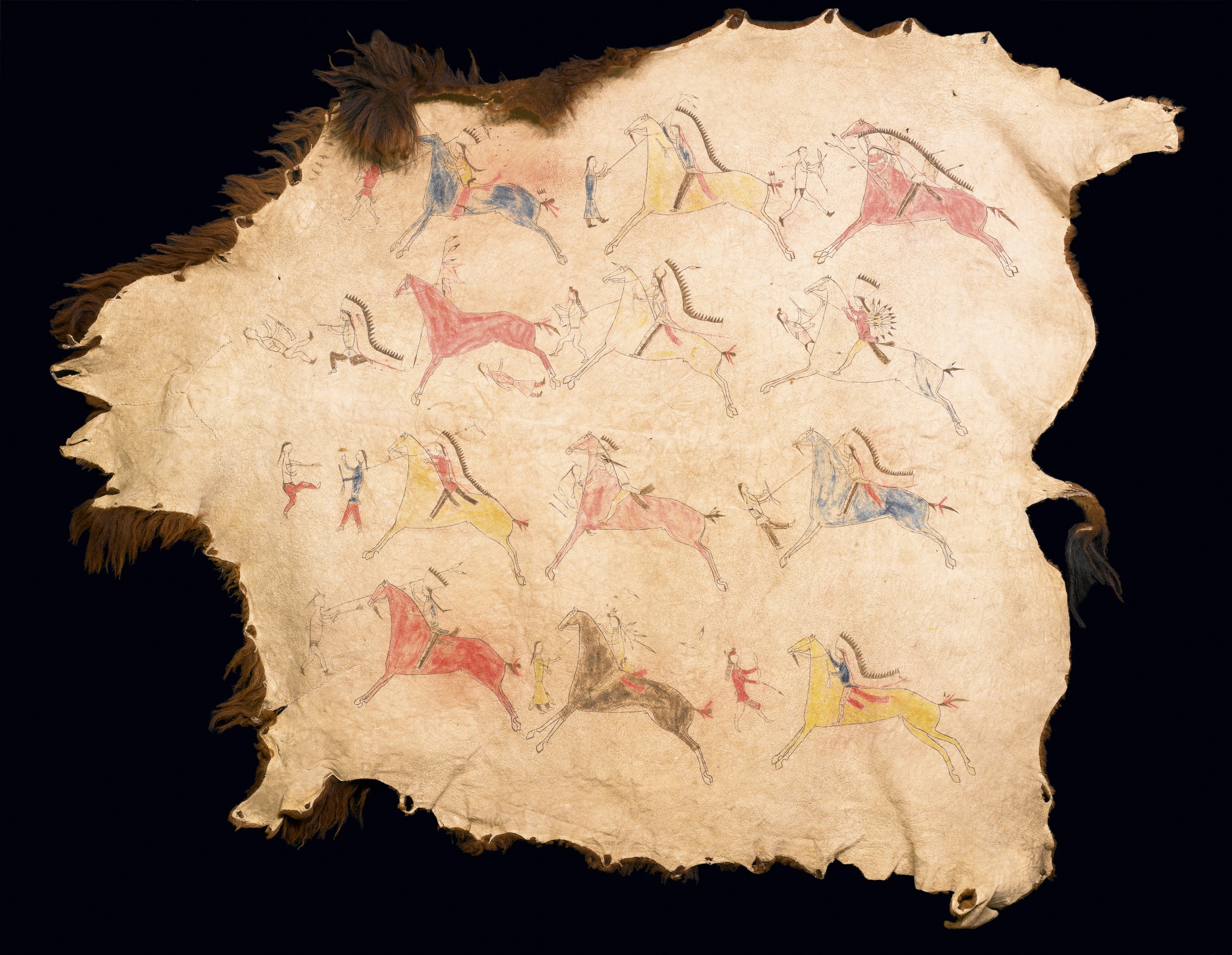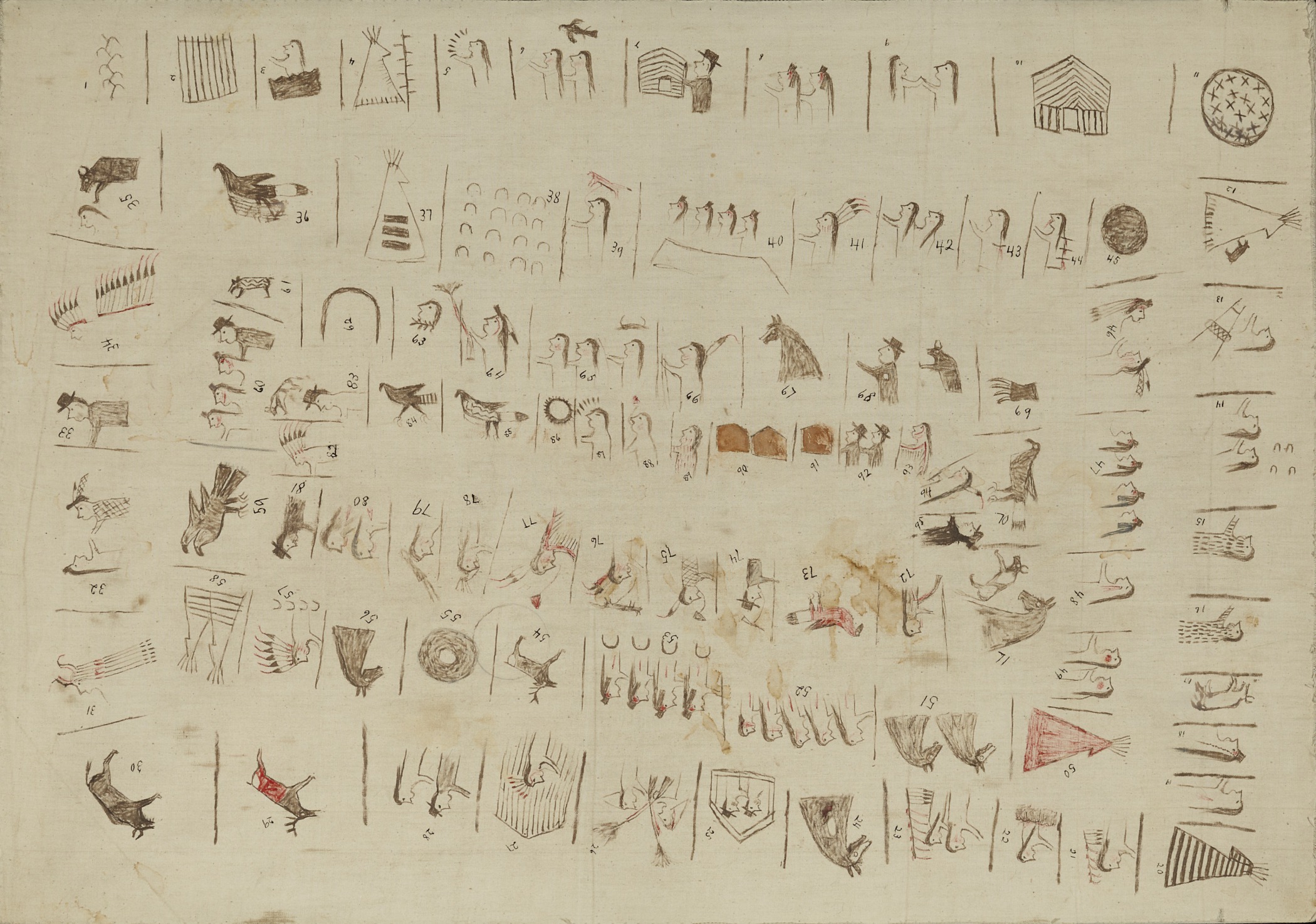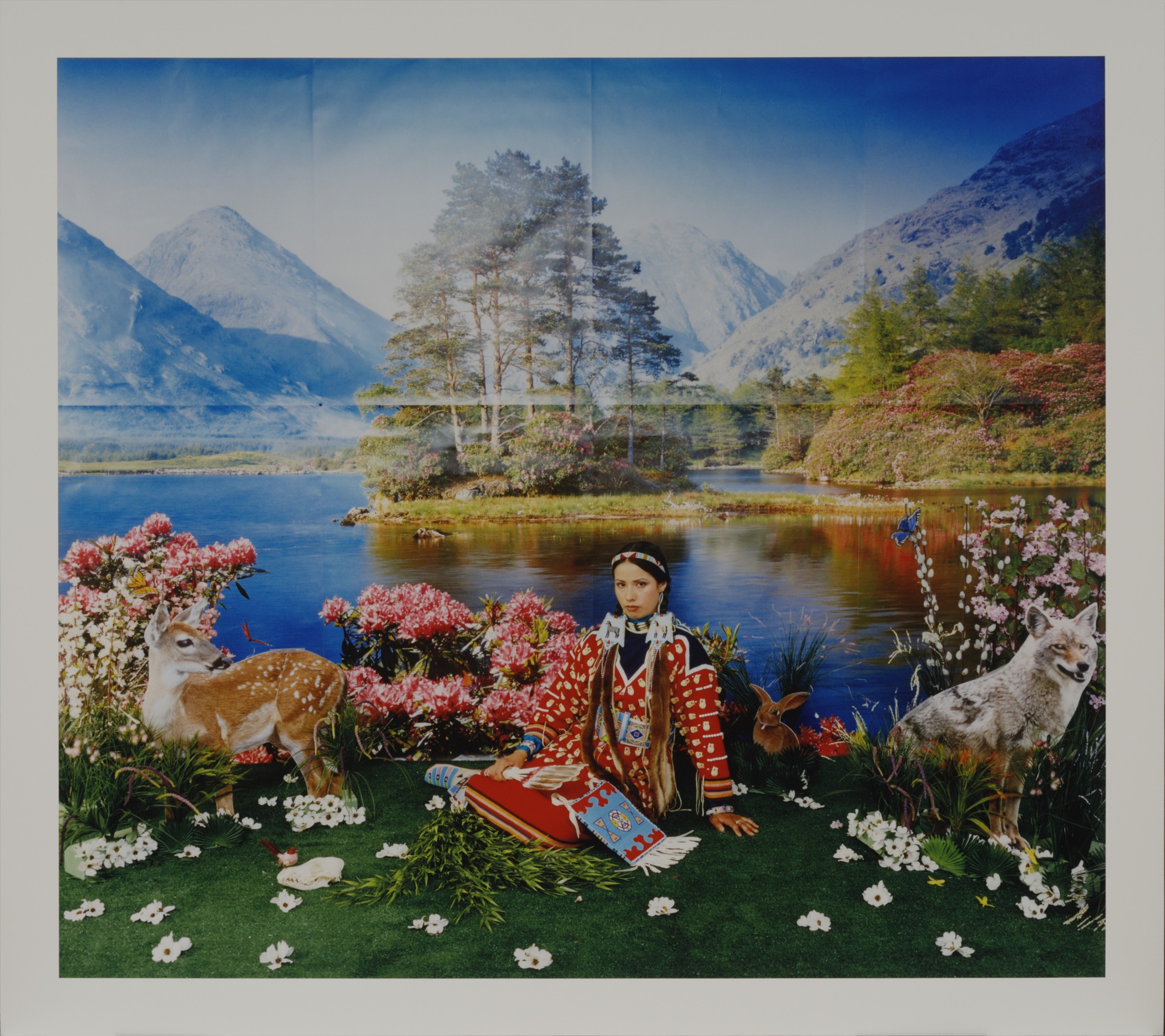Unrecorded Iháŋktȟuŋwaŋna (Yanktonai) Dakota keeper
Waníyetu Wowápi Tȟá Matȟó Wakȟáŋ (The Winter Count of Medicine Bear), recording the years 1823–1917
- About 1917
- Colored pencil and crayon on muslin
- 30 1/8 × 43 1/2 in.
Hood Museum of Art, Dartmouth College: Purchased through the William S. Rubin Fund, the Guernsey Center Moore 1904 Memorial Fund, the William B. and Evelyn F. Jaffe (58, 60, & 63) Fund, the William B. and Evelyn A. Jaffe Hall Fund; 2009.65
visibilityLook & DiscussA winter count is a mnemonic device, or a device to trigger memory, which a tribe used to keep track of the years (or number of winters that had passed). The winter count keeper chose a pictograph, or image, representing a significant event to represent each year. Winter counts were originally painted on buffalo hides. When buffalo became scarce, muslin, a type of thin cotton trade cloth, replaced hides.
The unrecorded keeper of a family group, or band, of the Yanktonai Sioux created this winter count. It covers the years 1823 to 1917, during the leadership of Matȟó Wakȟáŋ, or Medicine Bear (about 1842/47–1916)
explore the object
As a Native American intern at the Hood Museum of Art, Singer Horse Capture (A’aaninin, Dartmouth Class of 2017) conducted research on this winter count, and developed an online exhibition.
Horse Capture writes:
As you explore the site and examine each glyph on the “Explore the Winter Count” page, think about what these glyphs represent and the stories that each one tells. This winter count provides a window into 95 years of a community’s history as they underwent decades of tumultuous and traumatic experiences including losing their land to white settlers, denial of their treaty rights by the government, starvation as a result of this neglect and the dismantling of their resources and homeland, and government policies based on a “kill the Indian, save the Man” ideology.
However, Native peoples are resilient, and like all tribal communities, the Iháŋktȟuŋwaŋna (Yanktonai) are continuing to fight for their rights and livelihood, most recently for their treaty rights, water safety, and cultural sites threatened by the Dakota Access Pipeline.
Activity: Create Your Own Pictograph
Nakota and Lakota people continue to tell their own family and local histories through winter counts today.
Choose a year of your life, or your family’s life.
What was most memorable about it? What was the most important event of that year?
Create a simple drawing, or pictograph, to commemorate it.
Try to include details that will act as a mnemonic device, or a memory helper, if you wanted to share the story of that year with someone in your family.
learn more
Meet Singer Horsecapture as she discusses the Winter Count of Medicine Bear.
Dartmouth Professor of History and Native American Studies Colin Calloway discusses this object as a means of recording history.




